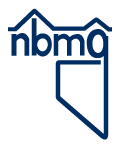Science of the Comstock - Tour
Home | Tour | Physics | Chemistry | Earth Science | Environment | Scams | Lesson Plans
Tour Topics:
Introduction
Mining Tour
QTVR
Vocabulary
QTVR of Virginia City
Taking the tour. To scan the Virginia City area from the top of Mount Davidson, click and hold the mouse button while you gently move the mouse in the direction you would like to scan. You can scan up, down, and move to the east (left) and back. The tour proceeds from the starting point looking south, moves to looking at the east, then up to the north. Pressing the Shift key will zoom in, while pressing the Ctrl key will zoom out.
Here we are on the top of Mount Davidson looking southeast. The weather is cool, but luckily not too windy. The rocks in the foreground are part of the Davidson Granodiorite, an intrusive igneous rock that is evidence for Virginia City's being in the midst of a 14-million-year-old, now extinct volcano. Look up and in the background we can see the snow-capped Sierra Nevada. In the middle ground, we can see the little town of Mound House. In the closest valley and in the hills above Silver City, we see the roads and some development south of Virginia City.
Turn a little to the east, past the smudge of the flag pole.
Pine Nut Range
The mountains rising in the background are the Pine Nut Range. Near the top of these mountains is the ghost town of Como, which came into existance in the late 1860's when gold was found nearby.
Between this northern end of the Pine Nut range and the mountains in which we stand is the valley of the Carson River, which flows out of the Sierras past Carson City, the capital of Nevada. We can't see Carson City, though, because it is hiding behind the high hills in the foreground to our right.
Below us we can see the roads at the south end of Virginia City, some in the hills above Gold Hill. The present day small settlement of Gold Hill is hidden in Gold Canyon, which leads out of Virginia City to the south.
New Truck Route to Silver City
Turning again to our left, much of the foreground is blocked by the small knoll of Mount Davidson. In the middle ground, though, we can see the new truck route to Silver City. This route avoids the steep climb, sharp turns, and narrow Gold Canyon that the old road takes, and that the Virginia Truckee Railroad used to take.
Look up again to the valley of the Carson River and we can barely see the town of Dayton. Dayton used to have several mills and a dredging operation and today hosts some farming and is enjoying an increase in population, mostly by people who work in Carson City.
More to our left, just below Mount Davidson, we see the southern end of Virginia City. Many of the spots of bare ground that show up very light are the dumps of some of the mines that operated during the boom days on the Comstock.
Six Mile Canyon
Turning left now to look east, we look down Six Mile Canyon through the Flowery Range into the Carson Plains. Just a little to the right of Six Mile Canyon, but underground, is the route of the Sutro Tunnel, which was built to take water from the mines in Virginia City out to the Carson River. Six Mile Canyon itself was important for mining activity but especially for the numerous mills located along the stream that carved the canyon.
In Virginia City, we can see the white roof of the school for the children of the town. To the left of that are the steeples of St. Mary's in the Mountains and St. Paul's Episcopal Church. Most of the buildings here date from after 1876. A fire destroyed most of Virginia City in 1875.
In the middle ground to the left of the road going down Six Mile Canyon is Sugarloaf, a volcanic peak. The rock type is andesite (a rock named for the volcanoes Andes Mountains). This rock is evidence that the Cascade Range now to the north in Oregon and Washington once included volcanoes in western Nevada.
Lahontan Reservoir
Off in the distance we can see the shining waters of Lahontan Reservoir. That body of water is formed by a dam on the Carson River.
Turning now to the northeast, behind the pole, we can see the new baseball diamond and the dumps of the old Ophir mine. The bush at our feet is a large ephedra or Mormon tea bush. People still brew the sticks of this plant to make a soothing tea.
Now, turning farther north, we can see the north end of Virginia City. The population of Virginia City today is a few thousand. Try to imagine the 10,000 permanent residents and the constant sound of the stamp mills during the Comstock boom.
Switchback roads
On the hill to the north, to the west of the north end of town, we can see the switchback roads from exploration for precious metals. Next to that is a sunken area where ground collapsed into a mine working.
As we turn to look straight north, we can see the tops of the mountains in the Virginia Range which is underlain mostly by volcanic rocks.
Our overview of the Virginia City ends here because the high hills of the Virginia Range block our view into Washoe Valley, which lies to the west, between these mountains and the Sierras. Take the Mining Tour to learn about how mining was done on the Comstock.


 Home
Home